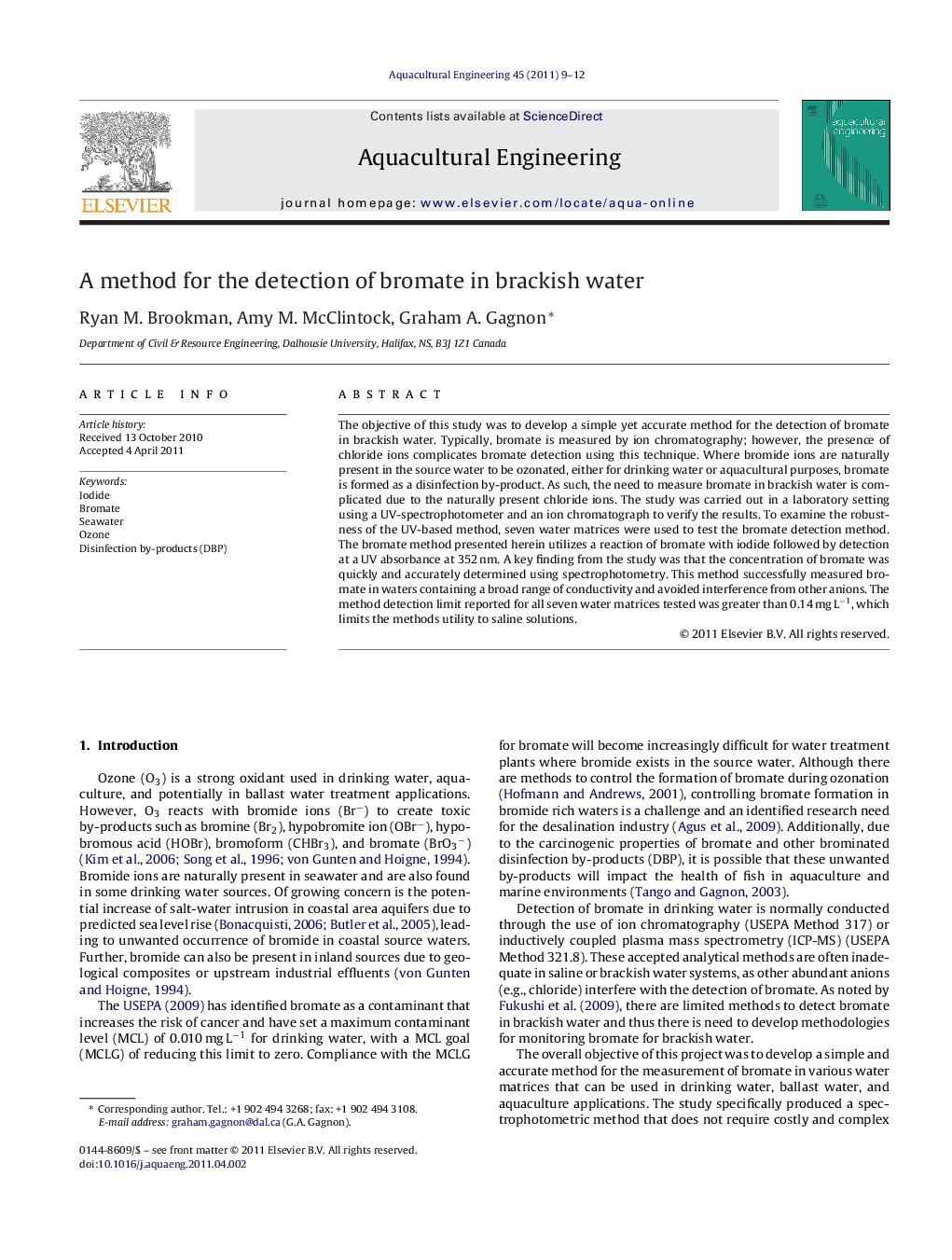| Article ID | Journal | Published Year | Pages | File Type |
|---|---|---|---|---|
| 4527345 | Aquacultural Engineering | 2011 | 4 Pages |
The objective of this study was to develop a simple yet accurate method for the detection of bromate in brackish water. Typically, bromate is measured by ion chromatography; however, the presence of chloride ions complicates bromate detection using this technique. Where bromide ions are naturally present in the source water to be ozonated, either for drinking water or aquacultural purposes, bromate is formed as a disinfection by-product. As such, the need to measure bromate in brackish water is complicated due to the naturally present chloride ions. The study was carried out in a laboratory setting using a UV-spectrophotometer and an ion chromatograph to verify the results. To examine the robustness of the UV-based method, seven water matrices were used to test the bromate detection method. The bromate method presented herein utilizes a reaction of bromate with iodide followed by detection at a UV absorbance at 352 nm. A key finding from the study was that the concentration of bromate was quickly and accurately determined using spectrophotometry. This method successfully measured bromate in waters containing a broad range of conductivity and avoided interference from other anions. The method detection limit reported for all seven water matrices tested was greater than 0.14 mg L−1, which limits the methods utility to saline solutions.
► The concentration of bromate was quickly and accurately determined using UV spectrophotometry regardless of water conductivity. ► Interfering compounds such chloride did not impede bromate detection. ► The method detection limit reported for bromate was 0.14 mg L−1.
